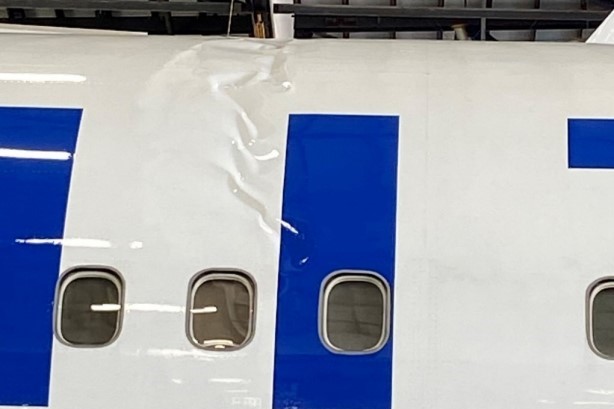The United States (US) National Transportation Safety Board (NTSB) released a preliminary report regarding an incident where the fuselage of a United Airlines Boeing 767 was substantially damaged after landing.
The incident took place on July 29, 2023, when a United Airlines Boeing 767-300ER, registered as N641UA, was attempting to land at Houston George Bush Intercontinental Airport (IAH). The twin-aisle jet was operating flight UA702 from Newark Liberty International Airport (EWR).
According to the NTSB, the first officer was the pilot flying (PF), while the captain was the pilot monitoring (PM) the flight. The departure and cruise segments of the flight were “uneventful”, with the Boeing 767-300ER reaching IAH at about 10:34 am when local air traffic control cleared the aircraft to land using the DOOBI2 arrival and Instrument Landing System or ILS runway 26L approach.
Both pilots told the NTSB the aircraft’s landing configuration was compliant with United Airlines’ stable approach criteria and the initial touch-down was “normal”. However, the PF told investigators that after the main landing gear touched down on the runway, “he held aft pressure on the control yoke to keep the nose wheel from hitting the runway”.
Subsequently, the nose wheel contacted the 26L “with abnormal force”.
“The airplane appeared to bounce, and he reacted by pulling aft on the control yoke, in an effort to keep the nose wheel from impacting the runway a second time,” the NTSB report continued.
The speed brakes deployed as the auto brakes engaged, resulting in a second bounce of the nose wheel. The first officer then deployed the thrust reversers (TR), allowing the aircraft to decelerate, and the captain took control of flying duties.
The Boeing 767-300ER taxied to its designated gate without further incident.
After the NTSB conducted a preliminary review of the flight data recorder (FDR), the investigators noted that after the initial touchdown on both main wheels, the 767-300ER “rolled to the left and right main gear lifted off the runway’s surface”. The report added that the nose wheel “touched down with a gravitational force equivalent (g) of about 1.4 g and bounced”.
“The speed brakes deployed, and the nose wheel impacted the runway a second time with a force of about 1.6 g followed by another bounce,” the NTSB noted, adding that the right TR wad deployed, and the nose wheel hit the runway again with a force of about 1.6 g.
Following a post-accident examination, “substantial damage to the crown of the upper fuselage” was observed by technicians on site. The NTSB noted that it did not travel to the scene of the incident.
None of the 202 passengers, including nine crew members, were injured during the hard landing.
The Boeing 767-300ER remains at IAH at the time of publication.

